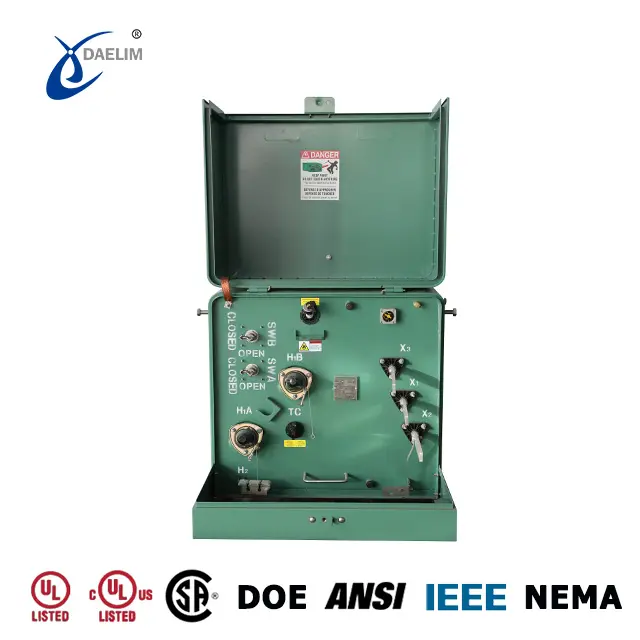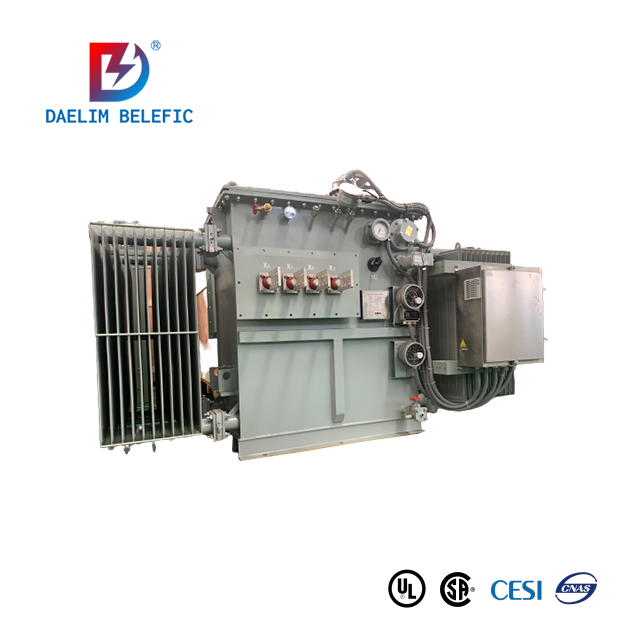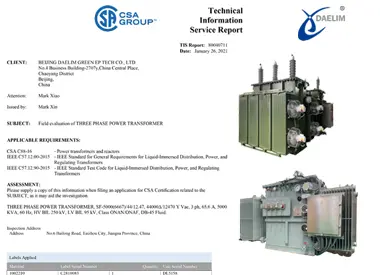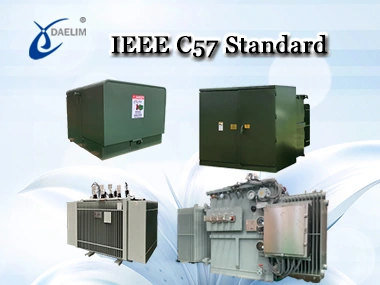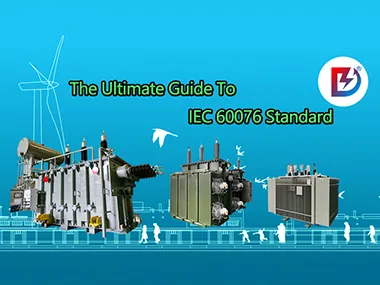Technical Standards for Transformers Across The Globe
Do you want to know what transformer standards are?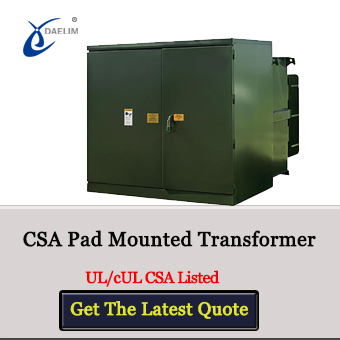
We've put together this guide to help you find out what standards are currently used to test transformers and how they compare with each other. We will cover the UL, IEEE, IEC, DOE 2016, NEMA, ANSI, Efficiency, and Impedance standards in this post.
This guide will also provide information on how many different types of transformer tests are generally performed, how they are usually conducted, and how they affect the quality of a transformer.
Let us briefly discuss each one.
What is a UL transformer?
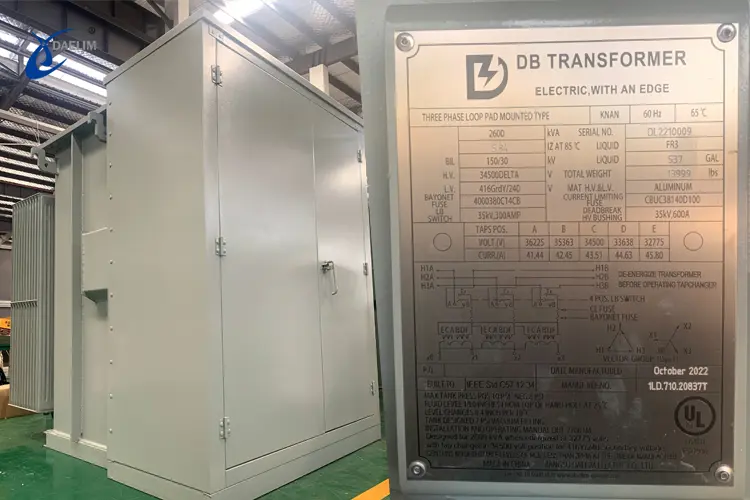
UL transformers are the most common in the US market. They're created by Underwriters' Laboratories(UL), and they're used by electrical utilities, power companies, and other organizations that handle large amounts of electricity. Transformers used in the United States must meet the safety testing standards of UL.
Daelim Beleific is a UL-approved transformer brand. Therefore, ul listing and ul labeling can be provided for you. Transformers are safe, reliable, and environmentally friendly.
What is the IEEE transformer standard?
IEEE transformer standards govern the performance of industrial electronics equipment. They're mainly used in factories or large buildings where high-power equipment is generally operated in a closed environment.
Read more about IEEE Transformer Standard
What is the DOE 2016 transformer standard?
DOE 2016 transformer standards are part of the U.S. Department of Energy's National Electrical Code (NEC). This standard stipulates the efficiency value of transformers with a capacity not exceeding 2500kVA in the US market. Includes single-phase and three-phase distribution transformers.
Learn more about DOE 2016 Transformer Standard
What is the NEMA transformer standard?
The NEMA transformer standard is formulated by the National Electrical Manufacturers Association (NEMA) in the United States, regarding the requirements for the protection level of the transformer enclosure. The protection level mainly includes NEMA 3, NEMA 3r, NEMA 4, NEMA 4X, etc.
What is the ANSI transformer standard?
ANSI transformer standards are specifically created by the American National Standards Institute (ANSI) and include more than 30 different types of transformers ranging from small appliances like air conditioners to large power plants with hundreds or thousands of transformers running at once.
How Do UL Transformer Standards Work?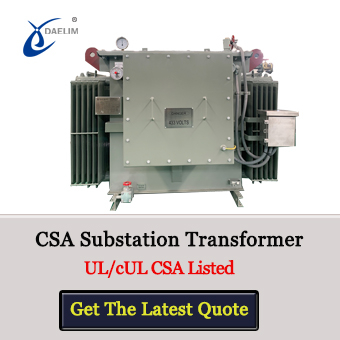
Underwriters Laboratories (UL) is a testing and certification organization that has been in business for over a century. They want to make the world a safer place by restricting the market to only reliable goods. To have your transformers "listed" or "recognized" by the USA, they must meet the standards set out by UL.
Any products with this mark may be genuinely trusted to work properly inside the bigger framework. In this accepted category, transformers are typically included because they are typically installed as a component of a larger circuit or piece of equipment.
You may enjoy: Pad Mounted Transformer
Transformer UL Standards Classification
UL506 Specialty Transformers
This includes the maximum allowable operating temperature rise, the dielectric strength requirement, and the manufacturing process characteristics for power transformers with ratings of 10.0 kVA or less.
UL1516
Applied to dry-type transformers and power transformers with a capacity of more than 10kVA.
UL1585 Class 2 and Class 3 Transformers
Current limitations and other overload protection features are generally included. They might or might not have current restrictions constructed in.
The purpose of a transformer's current limiters is to prevent a transformer from catching fire in the event of an overload or short circuit.
Current or thermal fuses, or fuses specified by the equipment manufacturer, safeguard against overload in non-inherent current-limited transformers.
If the transformer is genuinely built with just approved components, the safety agency won't need to conduct tests to ensure it is compatible with the rest of the system.
Overall, to avoid having the safety agency review each component, it is always recommended to only use transformers that have been UL approved.
You may enjoy: How To Choose A Transformer Supplier?
What Are IEEE Transformer Standards And Requirements?
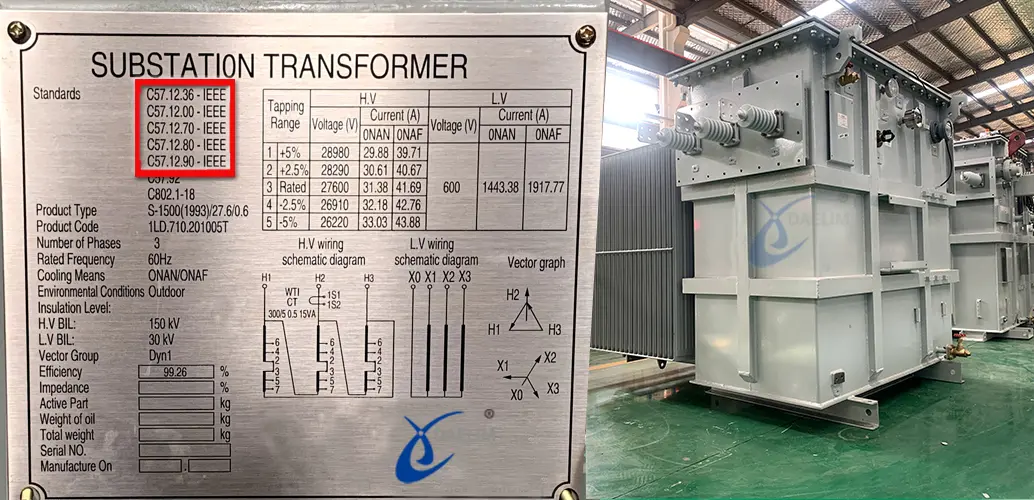 The IEEE Standards Association is a respected standards-setting body that uses an open process to consult with several stakeholders in the industry before releasing consensus guidelines for that sector.
The IEEE Standards Association is a respected standards-setting body that uses an open process to consult with several stakeholders in the industry before releasing consensus guidelines for that sector.
Here are some of the testing and inspection of IEEE for power transformers:
The IEEE C57.12.00 standard is mainly used to test distribution, power, and regulating transformers that are usually submerged in liquid, whereas the IEEE C57.12.01 and IEEE C57.12.91 standards are usually used to test dry-type transformers.
The manufacturer does quality control testing at many points during production to ensure that the final transformers meet all specifications and perform as intended.
Machines and parts of power transformers must undergo extensive design testing to provide the specified performance levels.
The TTR ensures that the unit's measured turns ratio is within the allowed range of the computed turns ratio, as specified by IEEE standards.
Routine power factor testing is generally performed on all power units by IEEE C57.12.00, even though this is more commonly associated with bigger class I and II power transformers.
Related Article
How to test a power transformer?
How Do IEC Transformer Standards Operate?
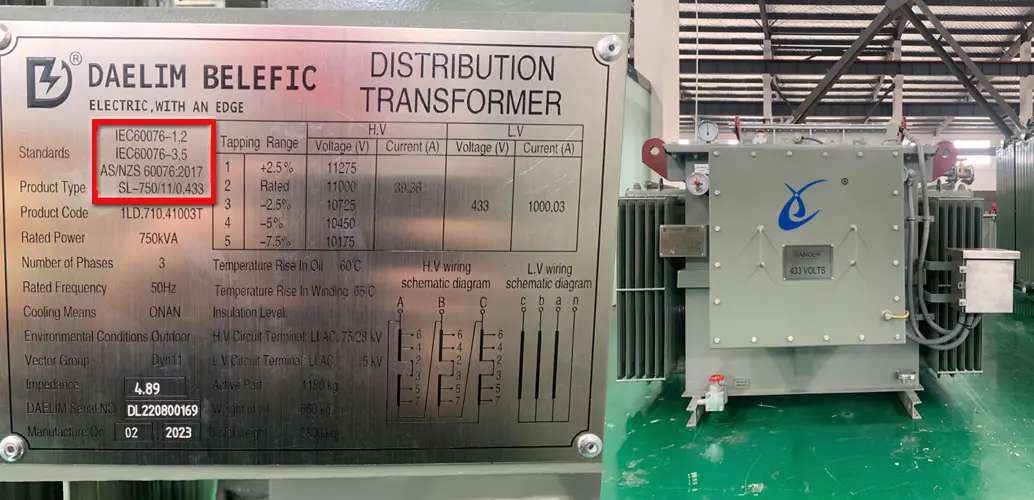
The International Electrotechnical Commission (IEC) creates and publishes international standards for electrical, electronic, and related technology.
IEC 60076 is a set of guidelines mainly developed by the International Electrotechnical Commission (IEC).
They aim to keep tabs on the decibel levels emanating from transformers, reactors, and the auxiliary cooling equipment utilized for these devices.
The techniques can be generally applied to any transformer or reactor meeting the requirements of the IEC 60076 series, IEC 60289, IEC 60726, or IEC 61378 without regard to their size or voltage.
The following categories of transformers are highly included in this specification:
Liquid-filled transformers equipped with a breather conservator;
Sealed-type liquid-filled transformers
Liquid-filled and air-core reactors transformers having no windings exceeding 1000 V for industrial applications
Reading more about IEC60076 Standard
IEC TC 96 is responsible for updating the standards in the IEC 61558 series, which covers "Transformers, Reactors, Power Supply Units, and Combinations.
TC96 is generally concerned with transformers and power supply units for electric shock prevention. Its main requirements are as follows:
IEC 61558 is only applicable to devices that have a voltage input
Maximum of one thousand volts
The source doesn't go any higher than 500 Hz in frequency
A 25 kVA rating is common for single-phase transformer output power
How To Meet The DOE 2016 Transformer Standards?
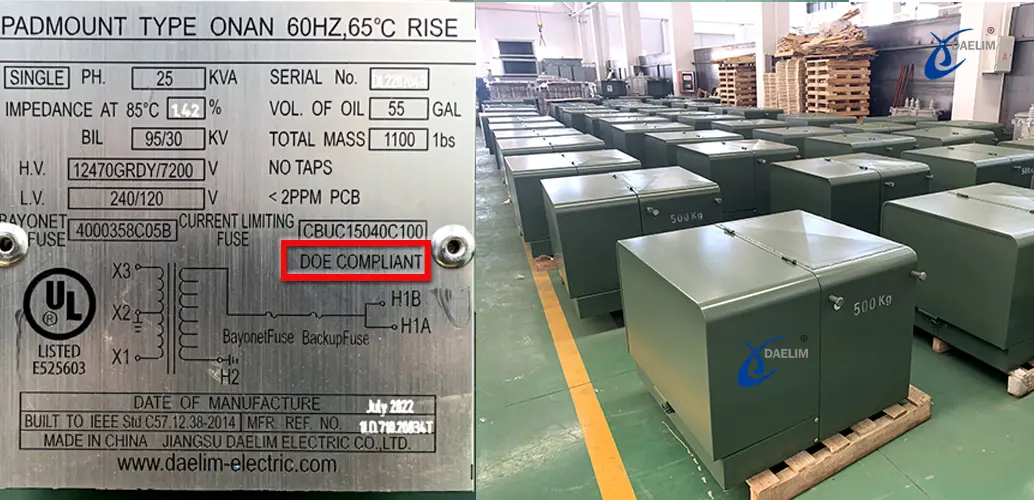 The Department of Energy is in charge of the United States' nuclear infrastructure and energy policy. The Energy Department also provides funding for research in this area.
The Department of Energy is in charge of the United States' nuclear infrastructure and energy policy. The Energy Department also provides funding for research in this area.
On January 1, 2016, the United States Department of Energy (DOE) issued new efficiency criteria for distribution transformers, mandating substantial increases in the electrical efficiency of this vital piece of equipment.
Transformers that are mainly used in data centers and factories have seen price increases and redesigns.
For the switch to new transformer designs that adhere to the standard to go smoothly, wide knowledge of the requirements is essential.
In 2016, the DOE mandated an efficiency range for three-phase systems of 97.89% to 99.28%, while maintaining the 2007 efficiency limits for single-phase systems.
Using high-performance low voltage transformers that are at least as efficient as the existing DOE standards can help medium and big data centers save money on their energy and cooling bills.
Medium voltage distribution transformers are custom-built per request and can be either single- or three-phase.
In addition to the efficiency criteria itself, engineers need to account for a wide range of situations when designing transformers that meet the DOE 2016 targets.
These include impedance, loading factors, temperature rise requirements, fluid demands, overloading, and space limitations.
In the US market, as long as the distribution transformer does not exceed 2500 LkVA, it must meet the efficiency value requirements of DOE2016.
Try for free: 2500 kVA Pad Mounted Transformer
What Are Codes And Standards Under NEMA Transformer?
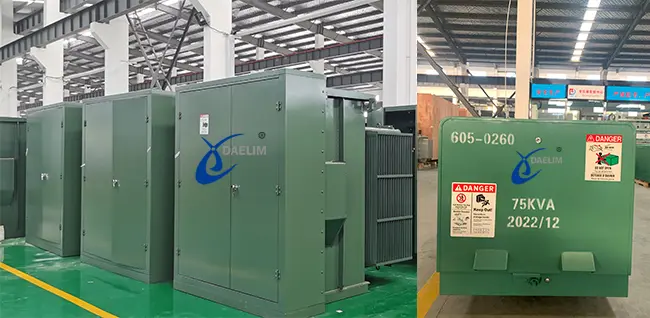
NEMA, short for National Electrical Manufacturers Association, sets standards for electrical medical imaging equipment and other devices.
NEMA Transformer Section
The NEMA Transformer Department is a part of the Utilities Products & Systems Division, which generally focuses on technical activities both at home and abroad.
Transmission and distribution voltage regulators, as well as distribution, dry-type, big and small power, and bespoke transformers, are all part of the extensive product line.
All dust and other minute particles are usually kept out of NEMA 1 equipment, making it suitable for operation indoors.
Transformers certified as NEMA 2 are suitable for indoor use due to their resistance to dust and water. They protect electronics from the former but not the latter (dripping and light splashing).
The elements, including dust, rain, sleet, and wind, cannot penetrate a NEMA 3 enclosure, nor can they develop ice on the outside of the housing.
Whether it's raining, snowing, sleeting, windy and dusty outside, or icy and cold inside, NEMA 3R enclosures are mainly built to last. The cage has holes for air circulation and a little drain at the bottom to let water out fast if it gets inside.
Reading on: The Ultimate Guide To Transformer Designs
What Are The List Of Standards Under the ANSI Transformer Guide?
The American National Standards Institute (ANSI) has generally created a system of methodological system known as ANSI codes to guarantee that all government agencies adhere to the same geographical naming requirements.
According to ANSI High Voltage Standard, minimum voltage ratings for 60 Hz electric power networks across the country are normally over 100 V.
Other specifications involve:
High voltage is between 115 and 230 kilovolts
high-voltage is between 345 and 765 kilovolts
high voltage is 1,100 kilovolts
The purpose of this ANSI transformer standard code is to outline tests that may be generally performed on dry-type transformers.
This Standard proposes minimal specifications for electricity metering current and voltage transformers.
This Standard contains the baseline specifications for transformers under temperature grades
Specifications for revenue metering using inductively linked current and voltage transformers
For NSVs operating between 0.6 kV and 69 kV, the range of supported insulation voltages against lightning impulses is 10 kV to 350 kV.
More about Dry Type Transformer
What Are The Benefits of Meeting Transformer Efficiency Standards?
To strengthen the reliability of the country's electrical grid, decrease consumer costs, and lessen the country's carbon footprint, the United States Department of Energy (DOE) has proposed new energy-efficiency criteria for three types of distribution transformers.
The objective of these initiatives is the following:
To cut down on the amount of energy and materials needed for building projects
Ensure that all electrical appliances in a building are operating at peak efficiency
The DOE takes into account the current standards and technical developments in the industry.
While there are technologies that show promise in the area of energy efficiency improvement, not all of them will be within the financial reach of the average consumer or business.
This is why the DOE takes into account price trends in the market while making recommendations.
The Department of Energy is also known for creating policies after the fact. As many states wish to create their criteria in addition to the federal ones, this might involve requirements at both the federal and state levels.
Manufacturers, energy specialists, and consumer advocates are just a few of the groups that provide feedback to the DOE.
Related Article
Learn more about Transformer Efficiency
What Is The Accurate Transformer Standard Impedance?
At full load current, a transformer's impedance is generally expressed as a fraction of the rated impedance of the load.
When a high secondary current is usually generated by a low primary voltage, this impedance is mainly determined from short circuit test results.
The impedance describes this low voltage in terms of its proportion to the entire rated voltage.
First and foremost, a transformer's maximum short circuit current drops as its impedance rises.
Second, the transformer's voltage control is worse throughout the entire load range if the impedance is large.
As per ANSI Standard C57.;12.26, transformers with a kVA rating between 750 and 2500 must have an impedance of 5.75 percent.
At the rated tap position, the percentage impedance of a transformer is the voltage across the transformer needed to short out one winding and enable the rated current to flow through the other winding.
Using higher-grade materials might reduce the transformer's leakage flux and percentage impedance. The transformer's % impedance has major consequences for the electrical grid.
Related Article
The Impact of Impedance on Transformer Design
Daelim Meets Global Power Transformer Standards
The world of transformers is a vast one. There are so many kinds of transformers, and each country has its own standards.
Here at Daelim Belefic, we've gone through the process of finding out. Daelim Belefic has obtained the transformer UL/cUL certificate which has been widely used in the North American market. Contact Daelim Belefic for a detailed transformer use case.
We consulted with experts in the field, we researched industry leaders, and we investigated top manufacturers across the globe to come up with an in-depth guide that can help you choose the right transformer for your needs.
Our guide covers everything from how much power a transformer can handle to how it's rated for voltage drop (and why that matters).
Finally, we've included relevant standards from leading organizations like NEMA, ANSI, IEEE, AS/NAS, and DOE 2016—so you know where to go if you need more information on any specific topic.
So whether you're looking for a brand-new transformer or just want to learn more about what makes one better than another, this guide is here to help.
Related Products
Related Article
CSA C88 Standard For Power Transformers
CSA C88 is a comprehensive standard for power transformer and reactor bushings in Canada and across the globe. Daelim is a professional supplier of CSA standard transformers. Not only has CSA product certification but also cUL listed. It can provide CSA and cUL labeling services for your transformer.
Ultimate Guide To IEEE C57 Standard
Daelim is a professional IEEE standard transformer supplier and manufacturer. Various types of IEEE standard transformers can be provided, such as pad-mounted transformers, oil-immersed transformers, single phase pole mounted transformers, dry transformers, and power transformers.
The Ultimate Guide To IEC 60076 Standard
Daelim is IEC, ANSI/IEEE, AS, CSA, and UL transformer manufacturer who has been exported to countries around the world. The transformers supplied by Daelim fully meet and exceed the requirements of the IEC 60076 standard.


